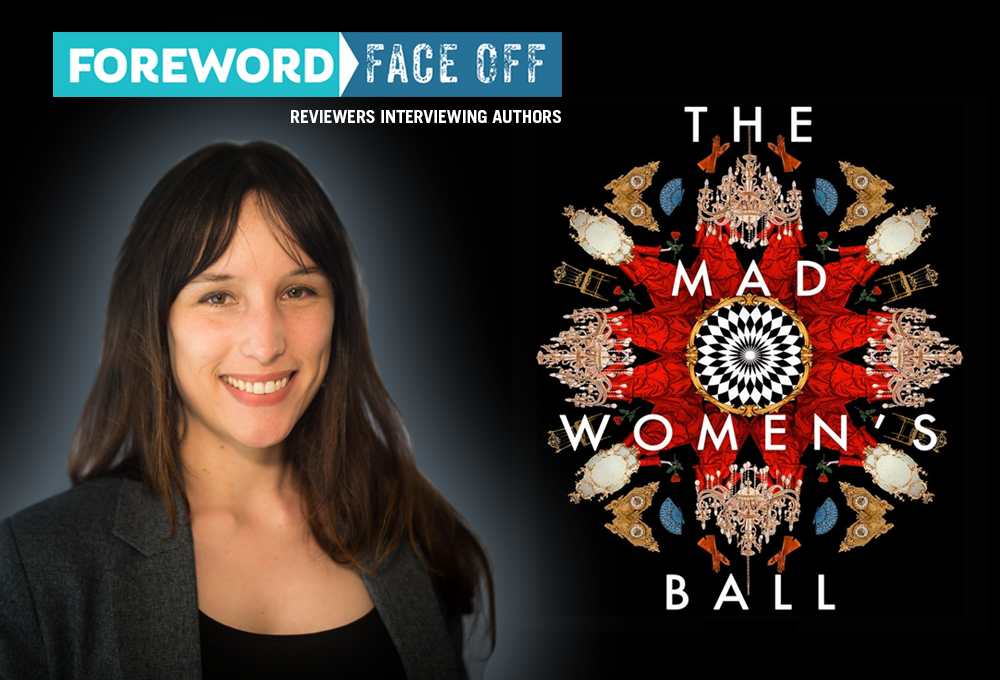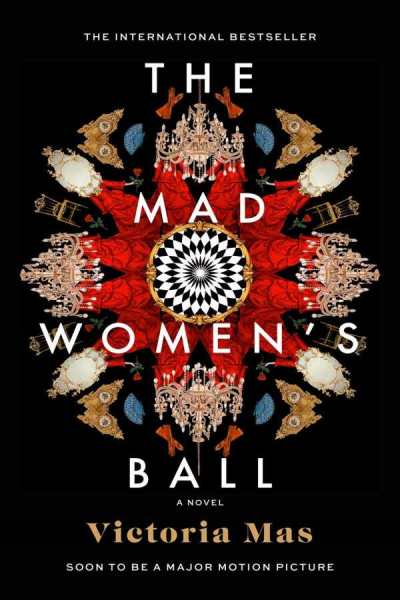It looks like you've stumbled upon a page meant to be read by our code instead of viewed directly. You're probably looking for this page.
Reviewer Michelle Anne Schingler Interviews Victoria Mas, Author of The Mad Women's Ball

Today’s interview brings to mind a splendid term we were introduced to last year by Kristen Sollee, a practicing witch and the author of Witch Hunt: A Traveler’s Guide to the Power & Persecution of the Witch. In her travels to famous witch sites around Europe and the United States, Kristen spoke of the overwhelming sense of connection to her witch bretheren—past and present—that she felt in certain places. She writes, “Driven by a desire to pick up pieces of the past, and to commune 
with forests and parks, ancient cities and sacred landmarks, I intuitively engaged with concepts like psychogeography and geomantic empathy before I knew there were names for the ways we can become intimate with the physical and metaphysical aspects of a place and how that place can impact our emotional state.”
This week, the notion of geomantic empathy follows us to a women’s asylum in late 19th century Paris known as the Salpêtrière—an institution where women were banished for any old reason at all when men found them to be inconvenient, and surely one that retains and radiates a powerful feminine energy.
The Salpêtrière is the setting for Victoria Mas’s The Mad Women’s Ball, a spectacular new historical novel which recently earned a starred review from Foreword Reviews’ Editor-in-Chief Michelle Anne Schingler. About the prisoners, Michelle writes, “They are survivors of rape, trafficking, and other unwanted attentions and afflictions that warrant compassion and treatment [but] because they are women, they are met instead with bars, electrodes, and voyeurs. As the indignities they’re subjected to pile up, rage builds––a feminist force that no walls can contain.”
Alright, let’s get out of the way and let these two feminist icons chat about how this novel came to be.
The mental health professionals of your novel, and its society at large, have a clear idea of what “madness” looks like. They seem to regard it as an actual, dangerous, and pretty uniformly female pathology. In practice, though, that label seems to fall on survivors of sexual violence, defiant women, and really any girl or woman who does not conform to rigid social constructs. In such a world: do you think it is “mad” NOT to be “mad”?
This one particular word expresses very opposite ideas. On one side, it can be used in very derogative ways. Madness evokes asylums, fear, and loss of control. It seems to have been a curse in art, Van Gogh being the most famous example of an artist turning “mad” (this also leads us to ponder the link between creativity and mental illness). Yet, it also refers to that moment when one breaks free and discovers themselves in another light. We can find many quotes around celebrating madness and being “mad.”—“Some people never go crazy. What truly horrible lives they must lead,” by Charles Bukowski, is one of them.—Madness can be limiting, but also emancipatory.
The Salpêtrière was a real place where experiments were actually conducted on inconvenient women—and it’s hardly a unique place in that sense. There are innumerable examples of similar hospitals existing, and restraining women and girls all across the world, far into the twentieth century. How much of this were you aware of before writing your book? What did you learn in the process of your writing and research?
I am sure the Salpêtrière is not the only hospital with an obscure history of locking women against their will. What struck me about this hospital is the fact that is was first built in the 17th century as a prison, in order to rid the streets of Paris of inconvenient women (beggars, prostitutes, etc.). It then turned into an asylum/hospital where different pathologies (mainly hysteria) were treated. Today, the Pitié-Salpêtrière is one of the largest public hospitals in Paris. The oldest buildings have such a complex history, yet we know very little about them. The mad women’s ball, for instance, was actually not well-known at all! Researching the Salpêtrière introduced me to whole new side of the history of Paris.
It occurred to me while reading your book that, even though the Salpêtrière of your novel no longer exists, we’re still using “mental health” as a cover to punish inconvenient women. Britney Spears’s abusive conservatorship is just the latest popular example of this. What are your thoughts on how far we’ve come—and how far we have left to go?
This [Spears] case seems to deal with many more complex issues, such as celebrity culture, the oversexualization of female artists, etc. Mental health has been a major subject in society recently, and I actually believe people are more inclined to listen and have discussions about it, however uncomfortable these discussions might be. Once a subject ceases to be taboo, it ceases to be an issue.
Even though the asylum’s practices were inarguably sexist and abusive, Thérèse chooses to regard Salpêtrière as a refuge from the unwanted attentions and cruelties of men. Do you think of her continued incarceration as: Tragic? Merciful? A combination? And what about Geneviève’s ultimate turn of fortunes?
The Salpêtrière hospital in the late 19th century was not solely a place of fear and forced confinement—it also provided a sense of security from the outside world. For instance, I mention the famous cabaret dancer Jane Avril, who had spent two years at the Salpêtrière during her youth. She mentioned later in life that it was there she discovered her passion for dance, and she had fond memories of her stay. In the novel, the character of Thérèse feels safer inside, where she is not subject to the violence and abuse she experienced until now. The same goes for Geneviève, who finds actual release within the walls of the hospital. The novel tries to question and broaden the idea of freedom.
It is clear early on in the book that Eugénie is not “mad”—she does actually see, and can communicate with, ghosts. What do you think that spiritualism had to offer such women that “polite” society did not?
When you look at the cases of the Fox sisters or Florence Cook (although they later turned out to be con artists), it is clear that spiritism helped them gain fame and public interest, which perhaps would have been more difficult had they chosen a different path. The spiritism movement in Europe seemed to be more about entertainment, than real belief in the afterlife. These women were able to have a legitimate place on a stage and were never regarded as witches or mad women.
Your book is in the process of being turned into a movie. What has that process been like, and when can we expect to see Eugénie and the rest of the women on screen?
I feel lucky and honored that Mélanie Laurent directed and stars in this beautiful adaptation. I chose early on not to be involved in the process: it didn’t feel right to cling onto my story, and I also felt I had already said everything I needed in the novel. Furthermore, I wanted the characters to exist through somebody else’s eyes. The result is wonderful, and it will be released September 17th on Amazon Prime.
Michelle Anne Schingler